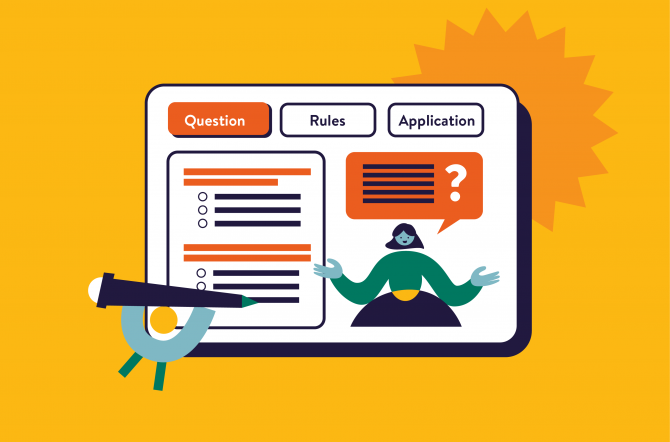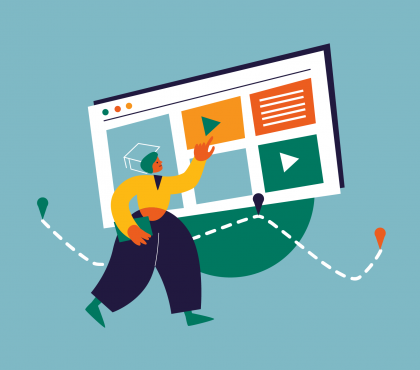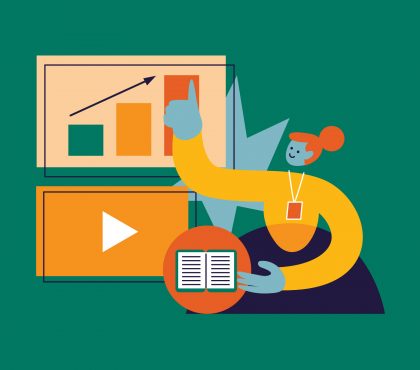Training prototypes may seem unnecessary when you begin developing content, but they can save you a lot of trouble. In this article, let’s walk through basic concepts of training or e-Learning prototypes: what it is, benefits, common types, how to distinguish, and how to prototype.
What are training prototypes?
A prototype is a physical representation of a rough idea. Prototypes are used in most fields of design to showcase how software, apps, and websites will function or look.
You can also use prototypes to test ideas and gather feedback from users.
It is now common practice to create eLearning prototypes as well. A prototype is an essential component of e-learning course development. In other words, an eLearning prototype is a mini version of your full-functioning course.
After looking at the e-learning prototype, stakeholders should have an idea of:
- The curriculum design strategy
- The display of learning objectives
- Attention grabbers in the course.
- Assessments after learning objectives
What are the differences between training prototypes and storyboards?
Prototypes allow instructional designers to focus on the learner experience instead of involving in content details early in a project.
Prototypes are learner-centered and can provide answers to questions such as:
- What are the most crucial user behaviors?
- Are the activities effective at developing the necessary skills?
- Are the activities energizing?
Storyboards, on the other hand, are content-centric and answer questions like:
- Do all topics involve?
- Is the vocabulary correct?
- Are the styles and graphics appealing?
Benefits of e-Learning and training prototypes
The benefits of prototyping far outweigh the drawbacks, and below are some advantages of training prototypes can:
- Assist you in executing your various ideas by acting as a perceptual aid.
- Assist you in uncovering an idea in the real world
- Assist you in identifying issues early in the design process.
- Encourage an agile design process.
- Allow you to avoid wasting resources and time on an idea that will not work.
- Educate sponsors and stakeholders on the reasoning behind your design decisions and the effort required to create an effective product.
4 Types of training prototypes
Consider what you need to think through, communicate with others, or test and evaluate before deciding what to prototype. Listed below are several different types of training prototypes.
#1 Interactive Training Prototype
This prototype aims to show features in an eLearning product. Consider the primary activities users will perform and create a training prototype for these interactions. These activities could be a game, simulation, or learning exercise. Then, involve learners in the activity and evaluate their performance.
Besides the activities, you can consider including the following items:
- Instructions on how to complete the activity
- Suggestions or consequences resulting from the learner’s interactions
Recommend reading:
#2 Look and Feel Training Prototype
A look and feel prototype’s purpose is to display a course’s interface and visual design. Include the following components:
- Color scheme
- Layout
- Image
- Menu
- Navigation buttons
- Other interactive features
#3 Responsive Training Prototype
If you develop a product to use on desktop and mobile devices, you must ensure that your product works properly. Prototyping early in the design process ensures that the product will look and function as designed on computers, tablets, and phones. Incorporate the following elements into your responsive training prototype:
- Complex screens covering the entire topic or lesson.
- Navigation and interactions designed for desktop and mobile devices
- The smallest font size possible
- Responsive graphics
#4 Feasibility Training Prototype
The feasibility prototype is the best suit if you or your team have several potential solutions. You can build a prototype for each idea to see if it is feasible and worth developing. In this case, you can include the following items:
- The unique features of your idea
- A summary of the most challenging part
- An overview of the section that may take too long to develop.
How to prototype
Your prototypes can vary in quality from low to high. You can begin with a low-fidelity prototype and progress to higher fidelity through feedback:
#1 Pencil and paper
A low-fidelity prototype is a sketched one. It’s a surprisingly helpful way to get started. Assume you’re creating a mobile support app.
To begin, you could use a mobile template to sketch the key screens and navigation. You could transfer to a digital format as you enhance your design based on user feedback.
#2 Wireframe Software
Wireframes depict the structural framework of a user interface or web page without going into too much detail. There are numerous online apps for generating design mockups, many of which now include interactive features such as Figma, etc.
In this below video, you will learn the basics of prototyping designs in Figma, including
- How to Begin Prototyping in Figma
- Removing Connections in a Prototype
- Alter the prototype’s starting frame
- How to Showcase a Prototype
- Connecting several elements in the same frame
#3 PowerPoint
You can quickly simulate interactivity as Powerpoint has graphic functionality and can hyperlink to other slides.
Furthermore, PowerPoint’s default slide orientation is horizontal, commonly used in eLearning. Because you can change the size of the slides, PowerPoint should also work for vertical prototypes.
#4 e-Learning Production Tools
Using an authoring tool gives you more opportunities to create a high-fidelity prototype. Experienced prototype designers will advise you to begin with a low or medium level of detail and work your way up to a high-fidelity prototype.
One advantage of beginning with an authoring tool is that you won’t have to redo the work once you’ve decided on your final design. The disadvantage is that you may become overly involved in the design details.
#5 App Prototyping
Applications created specifically for prototyping tend to concentrate on web pages and mobile design. As a result, if you’re building mobile learning, learning portals, or HTML-based courses, they might be a good fit.
Final words
You can easily skip the step of building a training prototype, but doing so can cause harmful effects. During the prototyping stage, you have to make most of the decisions at some point. By tackling them early, you’re simply giving yourself a head start on your course’s scope, design, and layout. These are not insignificant decisions, and they can have a significant impact on the content you create.
Read more:




